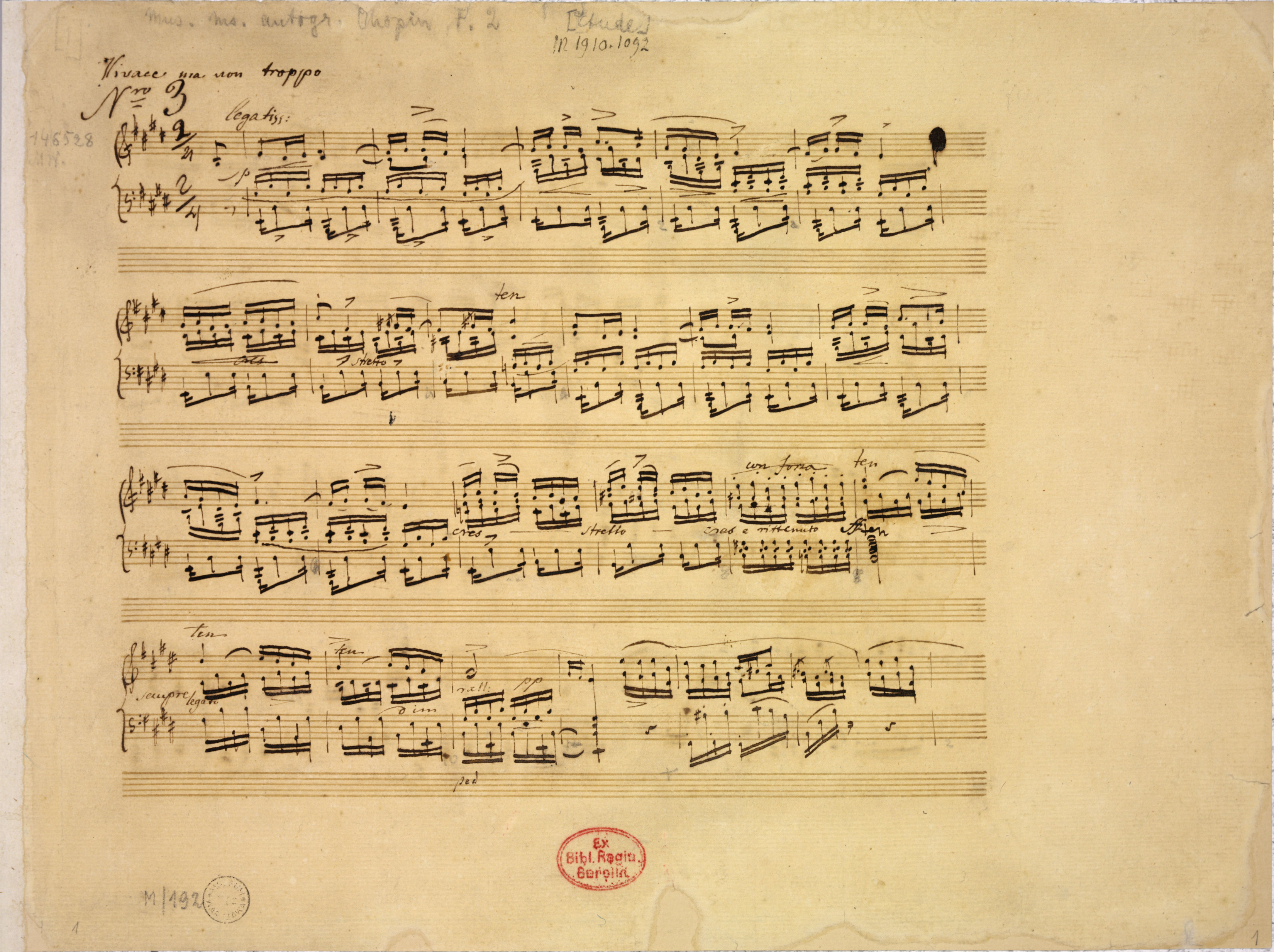Op. 2, Variations in B♭ major
Op. 10, 12 Etudes
Op. 11, Concerto in E minor
Op. 21, Concerto in F minor
Op. 22, Polonaise in E♭ major
Op. 24, 4 Mazurkas
Op. 25, 12 Etudes
Op. 26, 2 Polonaises
Op. 27, 2 Nocturnes
Op. 28, 24 Preludes
Op. 30, 4 Mazurkas
Op. 35, Sonata in B♭ minor
Op. 50, 3 Mazurkas
Op. 63, 3 Mazurkas
Op. 64, 3 Waltzes
(Op. 4), Sonata in C minor




Op. 10 No 3, Etude in E major
The accent in the 1st half of the bar may be interpreted as long or short in A. A clearly longer sign is written also in AI. On the other hand, a comparison with analogous accents in the 2nd half of this bar and in bars 1-2 suggests the second possibility and this is how the sign was understood in FE (→GE,EE). According to us, the context, particularly the harmonic one, can justify distinguishing this note with a longer accent.
Compare the passage in the sources »
category imprint: Graphic ambiguousness
issues: Long accents
notation: Articulation, Accents, Hairpins



